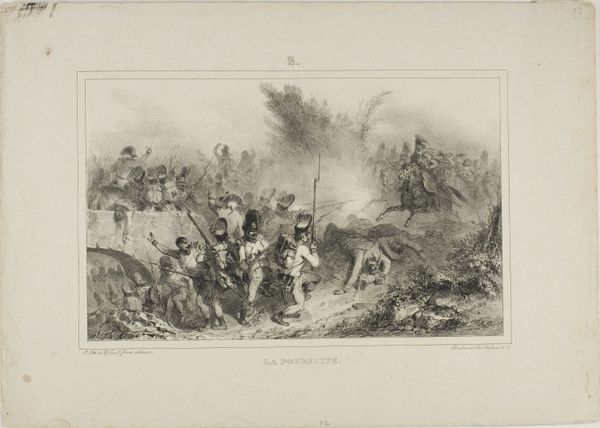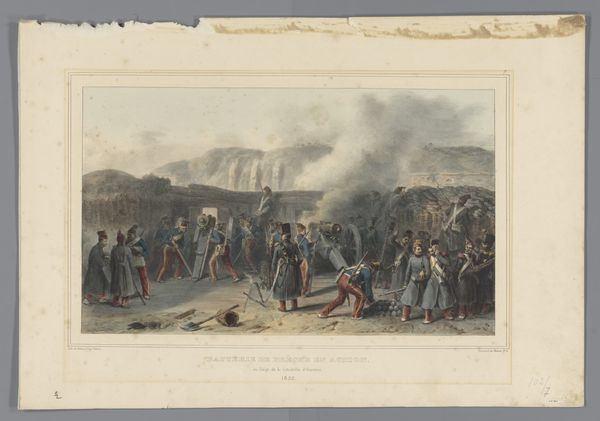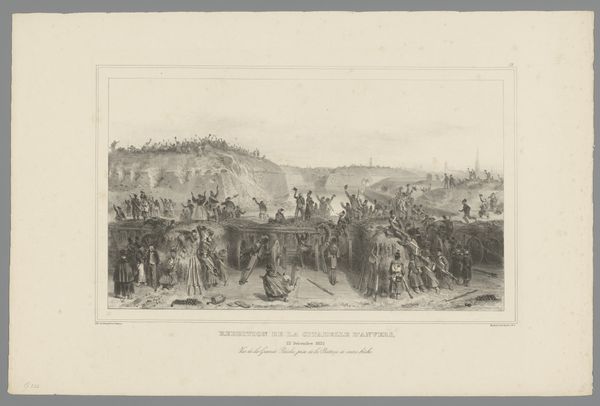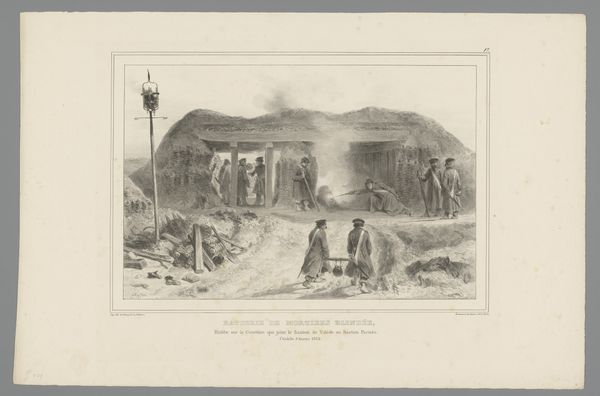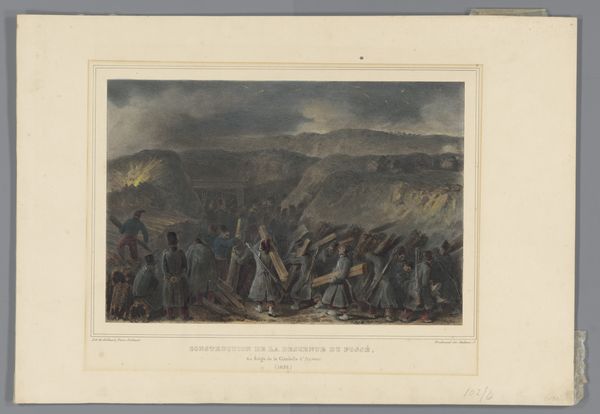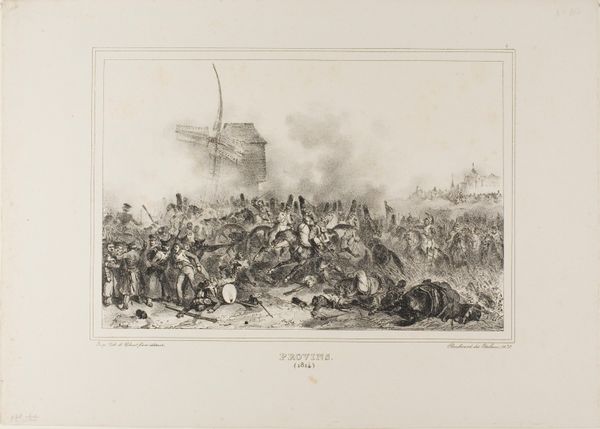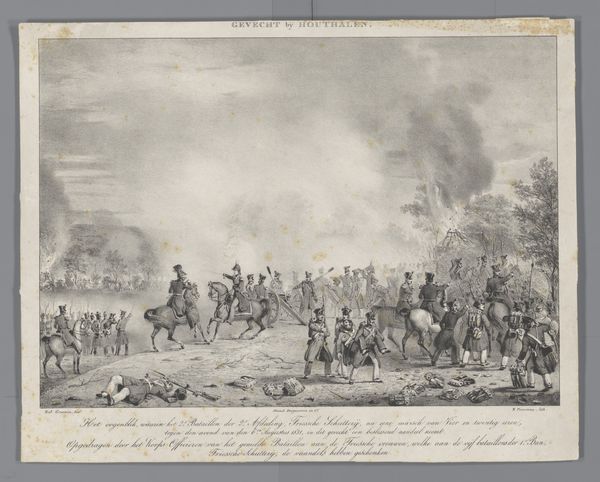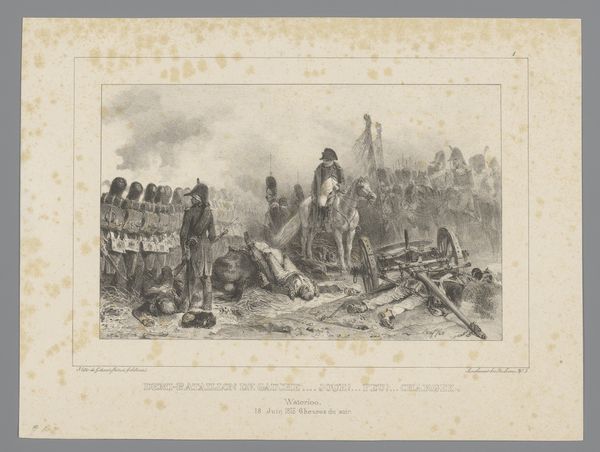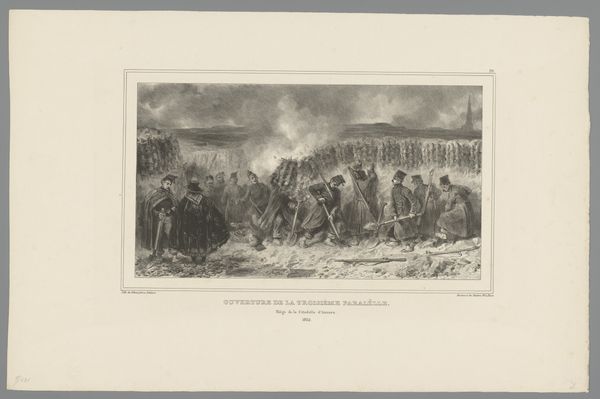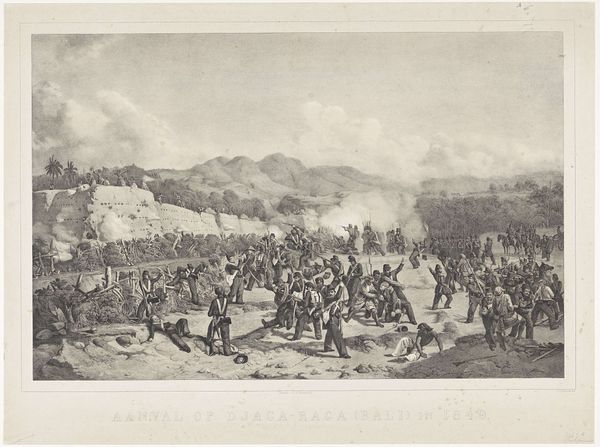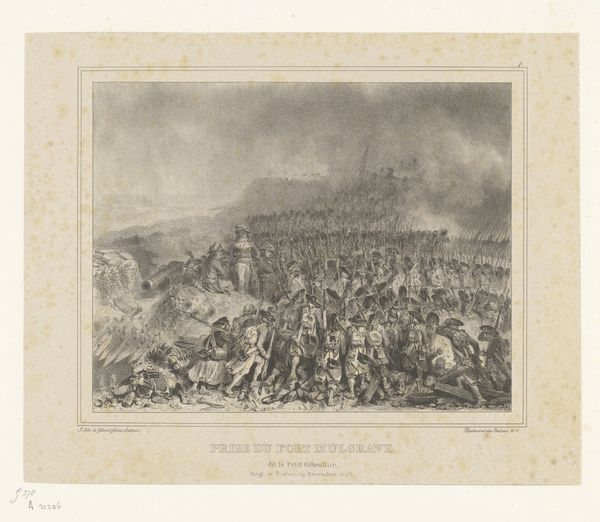
drawing, lithograph, print
#
drawing
#
aged paper
#
lithograph
# print
#
landscape
#
romanticism
Dimensions: height 365 mm, width 550 mm
Copyright: Rijks Museum: Open Domain
Curator: Auguste Raffet’s lithograph, “Beschieting van de Citadel, 1832,” made in 1833 and held at the Rijksmuseum, captures a military scene with remarkable detail. What strikes you first about this print? Editor: The overwhelming chaos, really. There’s a lot of visual information, a jumble of figures and smoke, almost a gritty feel even within the lithograph medium. Curator: Indeed, Raffet masterfully uses lithography to convey a sense of immediacy. Consider the strategic arrangement of figures and the vanishing point toward the citadel itself; the structure imposes an asymmetrical dynamism across the visual field. Editor: I'm thinking about the physical labor implied here, beyond the obvious violence. The soldiers’ movements, the sheer effort required to operate those cannons—and the immediate aftermath implicit in the smoke. It all points to very strenuous work. What sort of labor was invested into producing this print and distributing it? Curator: Good point. The lithographic process itself involved considerable physical and technical skill, requiring precise drawing on the stone and careful printing to achieve such tonal range and clarity. It signifies a cultural need to record and disseminate such events, thereby becoming itself another method of power exertion. Editor: It is quite Romantic, but stripped of any heroic idealization. More focused on depicting raw, almost industrial aspects of war than glorifying combat. Curator: The print indeed situates us between Romanticism and the dawning Realist depictions. Note, however, the careful management of the light which adds a somewhat ideal quality even amidst what would be perceived as ‘truth’. Editor: The scale feels significant in that respect, too. While modest, it allows for individual ownership and closer scrutiny of these processes of conflict. A material object facilitating reflection, maybe critique? Curator: Certainly, a convergence of craft and documentation that allows us, generations removed, to examine not only the depicted events but also the intricate socio-cultural fabric that birthed this image. Editor: Right, the work extends past Raffet and implicates social forces much bigger than his creative control.
Comments
No comments
Be the first to comment and join the conversation on the ultimate creative platform.

